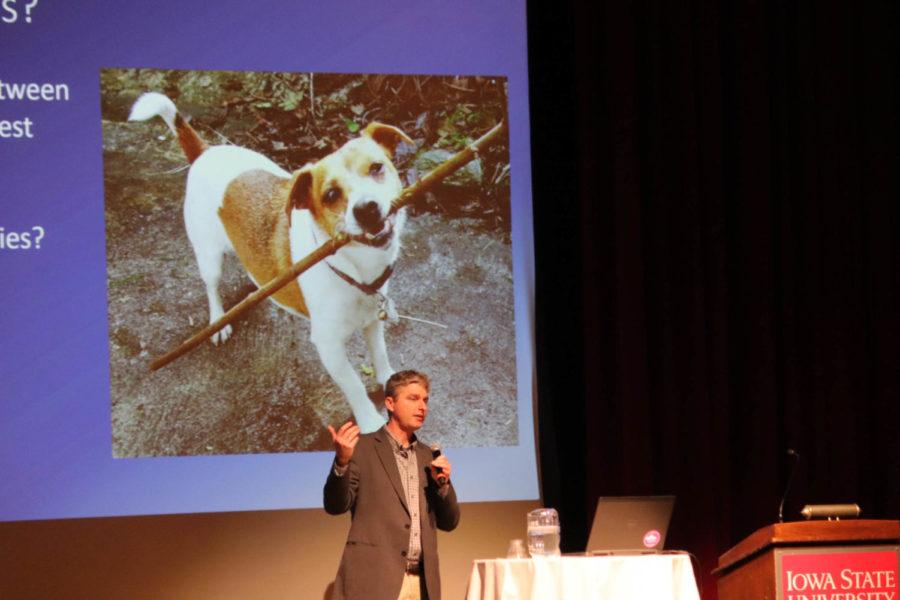Understanding America’s earliest dogs
GrantTetmeyer/Iowa State Daily
Dr. Chris Widga, an expert in vertebrate paleontology at East Tennessee State University, discusses the genetic diversity and linage of domestic dogs. He focused on the cross of wild and domestic populations as well as the takeover of European breeds pushing out American breeds.
February 27, 2019
Everyone knows dogs evolved from the wolf, but how true does this hold up to the genetics?
Chris Widga, the head curator at the East Tennessee State University Museum of Natural History, said as a curator he thinks a lot about what’s in his own backyard.
Widga said we don’t know where the first domestication of dogs came from, but it is hypothesized it could have started from a direct selection from the local wolf populations or unintentional selection of human-tolerant wolves.
Widga has been working with Dennis Lawler, a retired doctor of veterinary medicine and archeologist Angela Perri to look at the ancient DNA in dogs.
The research has provided answers as to the unique genetic structure of America’s first dogs through the DNA evidence recovered from several ancient animals.
The team’s research has offered some insight into the complex evolution of canine history.
“We’re always trying to push the envelope and understand more of these things,” Widga said.
Widga’s fascination with dogs started when he saw remains of a dog from a bison kill site in Cherokee County. The remains dated to 7,000 years ago.
Widga said dogs are hugely diverse, but yet very similar genetically. He said they evolved from gray wolves but also in a cultural environment.
“There’s about a 0.2 percent difference between dogs and wolves genetically,” Widga said. “That’s about the same as our genetic history and Neanderthals.”
Widga said they don’t see much retention of native dogs in any dogs that exist in North America today. They are still working on the years between human colonization and when the earliest remains are dated to, which is about 4500 years ago.
“It’s kinda cool to see how they’re super related to the wolves,” said Taylor Baranski, a sophomore in environmental science.
Baranski said the lecture was a lot of explanations of smaller topics that are still being researched.
“It’s a process, not an event,” Widga said.
He said based off of joint injuries that can be seen in the dogs bones, they can tell the animals have been used for many different things including working dogs, hunting aids and traction, herding, sanitation, security and even occasionally food.
“Dogs are already embedded in all aspects of human culture in the midwest at this point and it’s really interesting,” Widga said. “It suggests that was not catching the whole story.”
Widga said there are still major improvements occurring in the methodological studies used and better recovery of DNA.
















